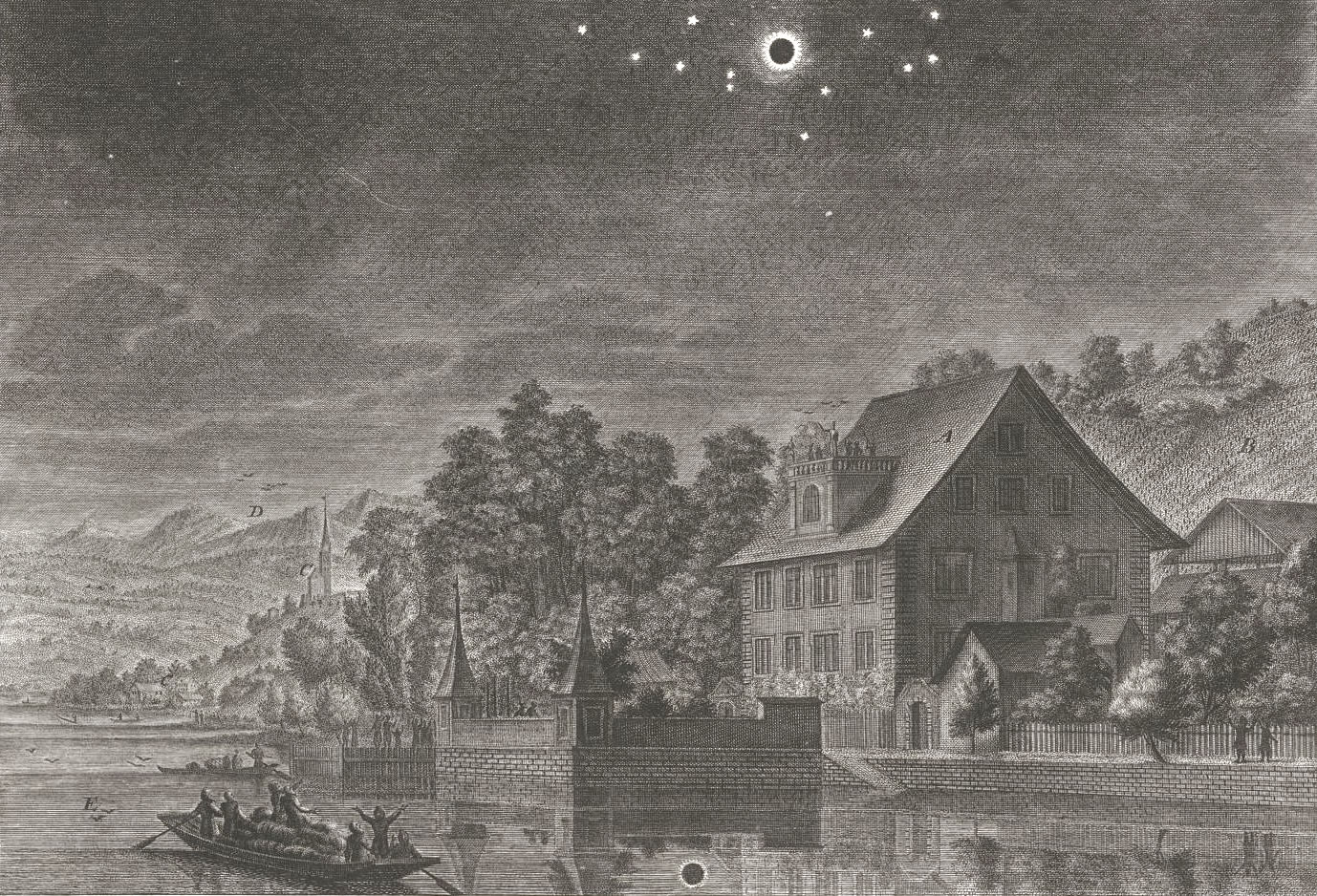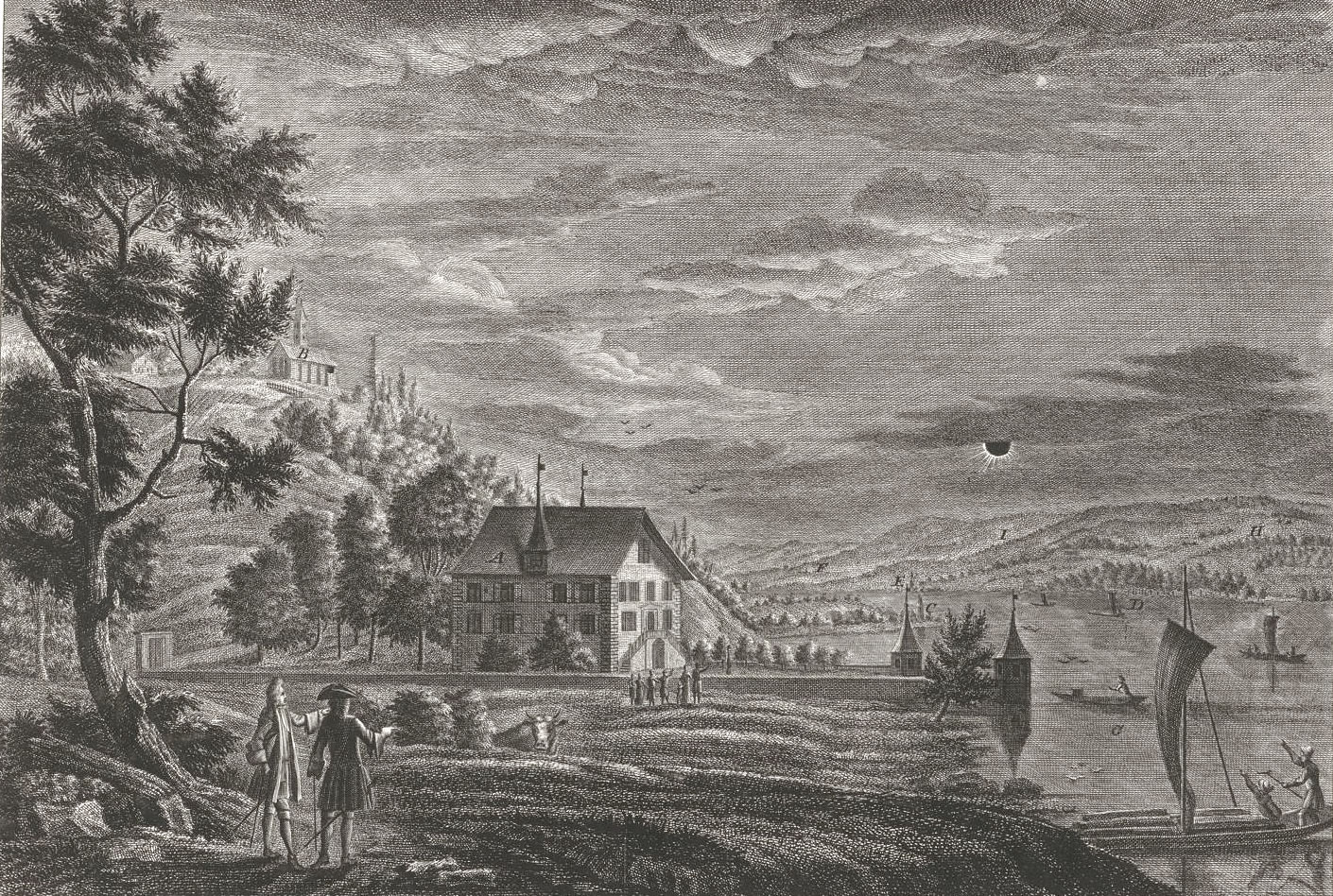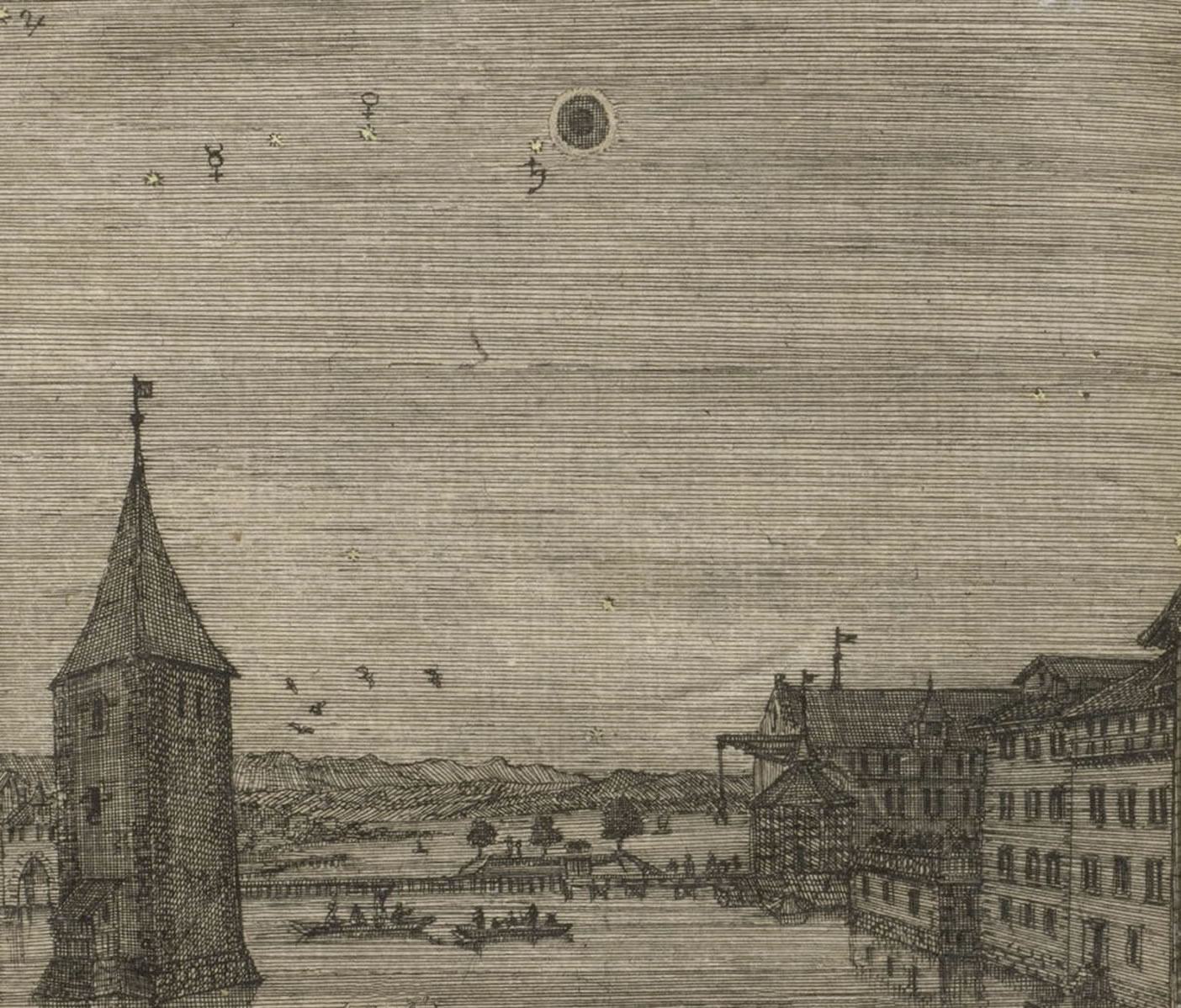Solar eclipses over Switzerland
Total solar eclipses
On 12 May 1706, there was an almost four-minute total solar eclipse that could be observed from all over Switzerland in good weather. Accordingly, it was mentioned in numerous chronicles and reproduced in impressive depictions.
The natural event is described by Hans Heinrich Bluntschli in "Memorabilia tigurina" (Zurich, 1742):
"The terrifying solar eclipse which occurred on 12 May 1706 is still fresh in our memory. It began at eight forty-five in the morning; was in the middle, that is at its biggest, at ten o'clock, and ended at eleven o'clock, in which time the sun had been masked by the moon as if with a curtain, and thus lost its glow to such an extent that the stars even came out. By around ten o'clock, no more work could be done. The chickens retreated into the tranquillity of their nests and bats could be seen flying around Weinplatz. This murkiness was followed by a very hot summer, and all was well with the wine and fruit."

Interestingly, the same work does not contain a description of the total solar eclipse over Switzerland that occurred only eighteen years later on 22 May 1724. Based on today's calculations, it would also have been visible from large parts of our country. As the totality occurred shortly before sunset, however, it is safe to assume that the eclipse was hardly registered by anyone in the overcast sky at the time; it must simply have felt as if night had fallen unusually early.

"The autumn month was nice again from the 2nd to the 18th. On one of these days, a large, annular solar eclipse that was partly hidden by clouds in many cities in Europe could even be observed. The eclipse began at one fourteen and fifty-eight seconds in the seventh autumn month, the formation of the light halo at two forty-two and four and a half seconds, the separation of the halo at two forty-three and forty-two seconds, and the eclipse ended at three minutes past four and forty-two and a half seconds. The decrease in light at the darkest point was significant, the air’s hue and all the objects illuminated by the sun reddish so that it seemed as if one had been transposed to one of those countries of which one has read about earthquakes and their forerunners. The thermometer dropped from fifteen and sixteen degrees to twelve in the space of a few minutes, which sufficiently heightened the peculiar, nightmarish impression of the whole experience."
An annular solar eclipse lasting six minutes and thirty-five seconds also occurred in Zurich on 9 October 1847.
Solar eclipses in the twentieth century
In the twentieth century, two total solar eclipses passed over Switzerland: on 17 April 1912 (in Zurich the maximum proportion covered was 88 per cent) and on 15 February 1961 (with more than 90-per-cent coverage). The partial solar eclipse on 11 August 1999 also unquestionably ranked among the astronomical events of the century.An annular solar eclipse lasting six minutes and thirty-five seconds also occurred in Zurich on 9 October 1847.
Solar eclipses in the twentieth century
In the twentieth century, two total solar eclipses passed over Switzerland: on 17 April 1912 (in Zurich the maximum proportion covered was 88 per cent) and on 15 February 1961 (with more than 90-per-cent coverage). The partial solar eclipse on 11 August 1999 also unquestionably ranked among the astronomical events of the century.
